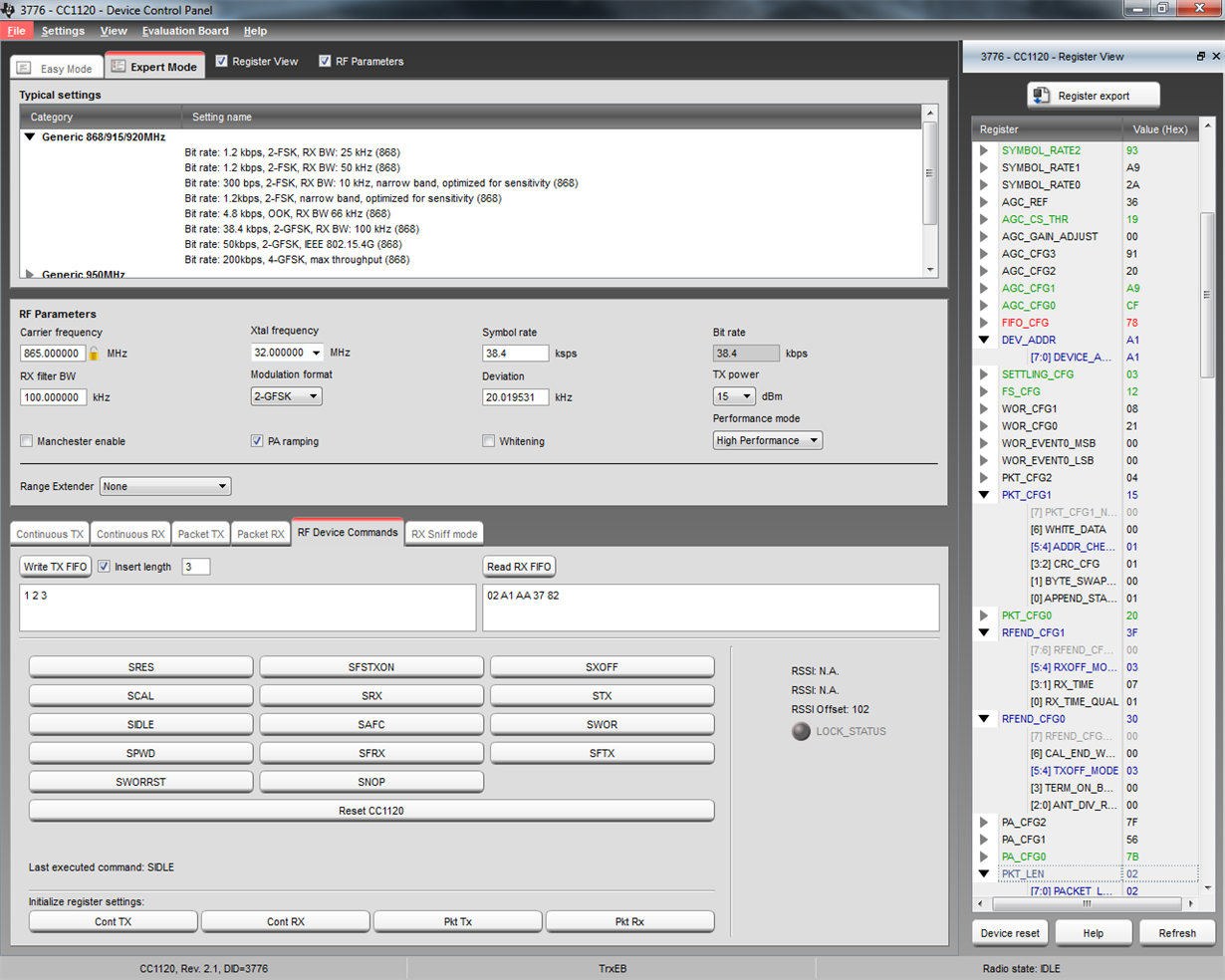Hello, I am trying to send a packet to two different boards and waiting for the reception of both auto acknowledges, one from each of the receivers. I am using LBT in the two receivers in order to not send both Auto ACK back at the same time, but it seems like it is not working. Both receivers are sending the ACK back at the same time, therefore I am losing one of them. I use ID for the two AutoACK to difference in the transmitter between the two Acknowledges sent from the two receivers.
I don't know why I don't get the channel busy when I try to send one of the Auto ACK if the other receiver is sending the Auto ACK and, therefore, busying the channel. My question is: How can I do that process? How can I not lose one of the Auto ACK back?
The threshold for the RSSI value that I am using is -90dbm. The boards are the TrxEB and the RF module the cc1120.
I attach the code for the transmitter and receiver.
Thank you in advance



